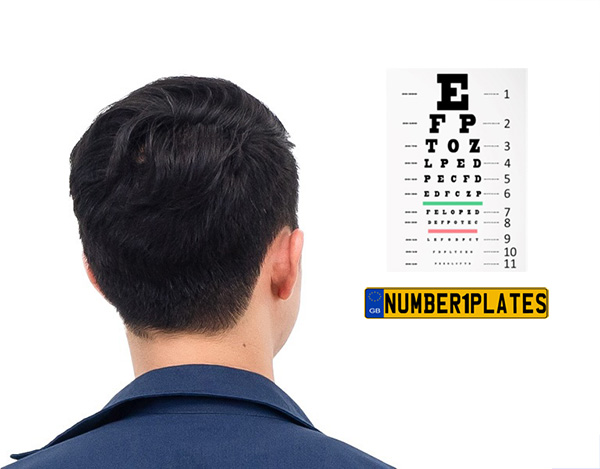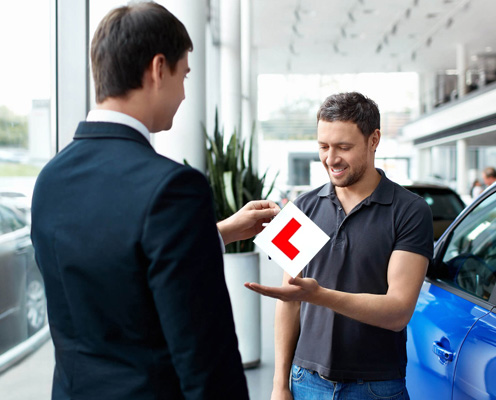A Complete Guide to Passing Your Driving Test
Getting your driving licence is a significant milestone, but it takes time and effort. Don’t worry, though. With proper preparation and practice, you can pass your test with flying colours and obtain your full driving licence on your first attempt.
Before you schedule your test, you’ll need to apply for your provisional licence, find a reputable driving instructor, and decide whether you want to learn in a manual or automatic vehicle.
In this detailed guide, we’ll address all your concerns about learning to drive and provide a step-by-step roadmap for acing your driving test.
Step 1: Obtaining Your Provisional Driving Licence
Before you hit the road, there’s some paperwork to handle. You must apply for your provisional driving licence, which is essential for learning to drive. Here’s what you need to know:
 When can you apply for a provisional driving licence?
When can you apply for a provisional driving licence?
You can apply as soon as you’re 15 years and nine months old, but it becomes valid when you turn 16.
What does a provisional licence allow you to do?
With a provisional licence, you can start learning to ride a moped or light quad bike at 16 and learn to drive a car at 17.
How do you apply, and what’s the cost?
Applying is straightforward and can be done online through the official GOV UK website. You’ll need to demonstrate your ability to read a number plate from 20 metres away, provide a valid form of ID, furnish your address history for the last three years, and pay a fee of £34 via credit or debit card.
Your provisional licence should arrive within a week, allowing you to move forward with your driving journey.
It’s also a good idea to familiarise yourself with the Highway Code while you wait for your licence to arrive, as you’ll need this knowledge for your theory test.
Step 2: Finding the Right Driving Instructor
A skilled driving instructor can make all the difference in your learning journey. While you might be tempted to save money by asking a friend or family member to teach you, it’s often best to invest in professional instruction.
A qualified instructor understands the requirements of the driving test and can provide structured lessons tailored to your needs. They’ll also have a dual-control car, allowing them to intervene if necessary during your lessons.
When choosing an instructor, prioritise someone who makes you feel comfortable behind the wheel. You’ll likely spend many hours together in the car, so a positive rapport is essential.
To find a reputable instructor, seek recommendations from friends or use the Approved Driving Instructor database on the DVSA website. This database lists all approved instructors in your area, making it easy to find a suitable match.
As for the cost of lessons, it typically ranges from £20 to £25 per hour, but rates may vary. Keep in mind that the quality of instruction is more important than the price, so choose wisely.
Lastly, consider whether you want to learn in a manual or automatic car. While automatics are easier to drive, obtaining a manual licence offers more flexibility in the long run.
Step 3: Starting Your Driving Lessons

As for the number of lessons you’ll need, there’s no set requirement. On average, learners complete around 45 hours of lessons and 20 hours of practice before taking the test, but individual needs vary.
Don’t rush the process—take the test when you feel ready, not when others expect you to. Your instructor will guide you and provide feedback along the way, helping you gauge your progress.
Consider whether an intensive driving course is right for you. These courses offer concentrated tuition over a short period, ideal for those looking to pass quickly.
Before your first lesson, make sure you have your provisional licence and a positive attitude—confidence goes a long way in learning to drive.
Step 4: Mastering the Theory Test
Once you’ve begun your practical lessons, it’s time to tackle the theory test. This written exam assesses your knowledge of the Highway Code and hazard perception skills.
You can book your theory test online through the official GOV UK website or by phone. The test costs £23 and consists of two parts: a multiple-choice section and a hazard perception test.
The multiple-choice section comprises 50 questions, and you must answer at least 43 correctly to pass. The hazard perception test involves watching 14 video clips and identifying potential hazards. The earlier you spot them, the higher your score.
To prepare, study the Highway Code thoroughly and take advantage of practice tests available online. Familiarise yourself with common road signs, rules, and procedures to increase your chances of success.
Step 5: Conquering the Practical Test
The moment of truth has arrived—your practical driving test. After completing your lessons and passing the theory test, you’ll be well-prepared for this final hurdle.
Booking your test is a simple process that can be done online or by phone. You’ll need your driving licence number, a credit or debit card for payment, and your instructor’s personal reference number if they’ll be accompanying you.
 While there may be a waiting period for test slots, you can check for cancellations to secure an earlier appointment.
While there may be a waiting period for test slots, you can check for cancellations to secure an earlier appointment.
On the day of your test, arrive with your theory test pass certificate and provisional licence. The test lasts approximately 40 minutes and consists of five parts:
● Sight check
● Show me, tell me questions
● General driving ability
● Reversing manoeuvres
● Independent driving
You’ll receive immediate feedback from the examiner and either a pass or fail certificate.
Remember, you can make up to 15 minor faults and still pass, but a single major fault results in an instant fail.
Stay calm and focused during the test, and trust in your training and abilities. With dedication and perseverance, you’ll soon be holding your full driving licence and enjoying the freedom of the open road.

 100% Road Legal
100% Road Legal Express Delivery
Express Delivery